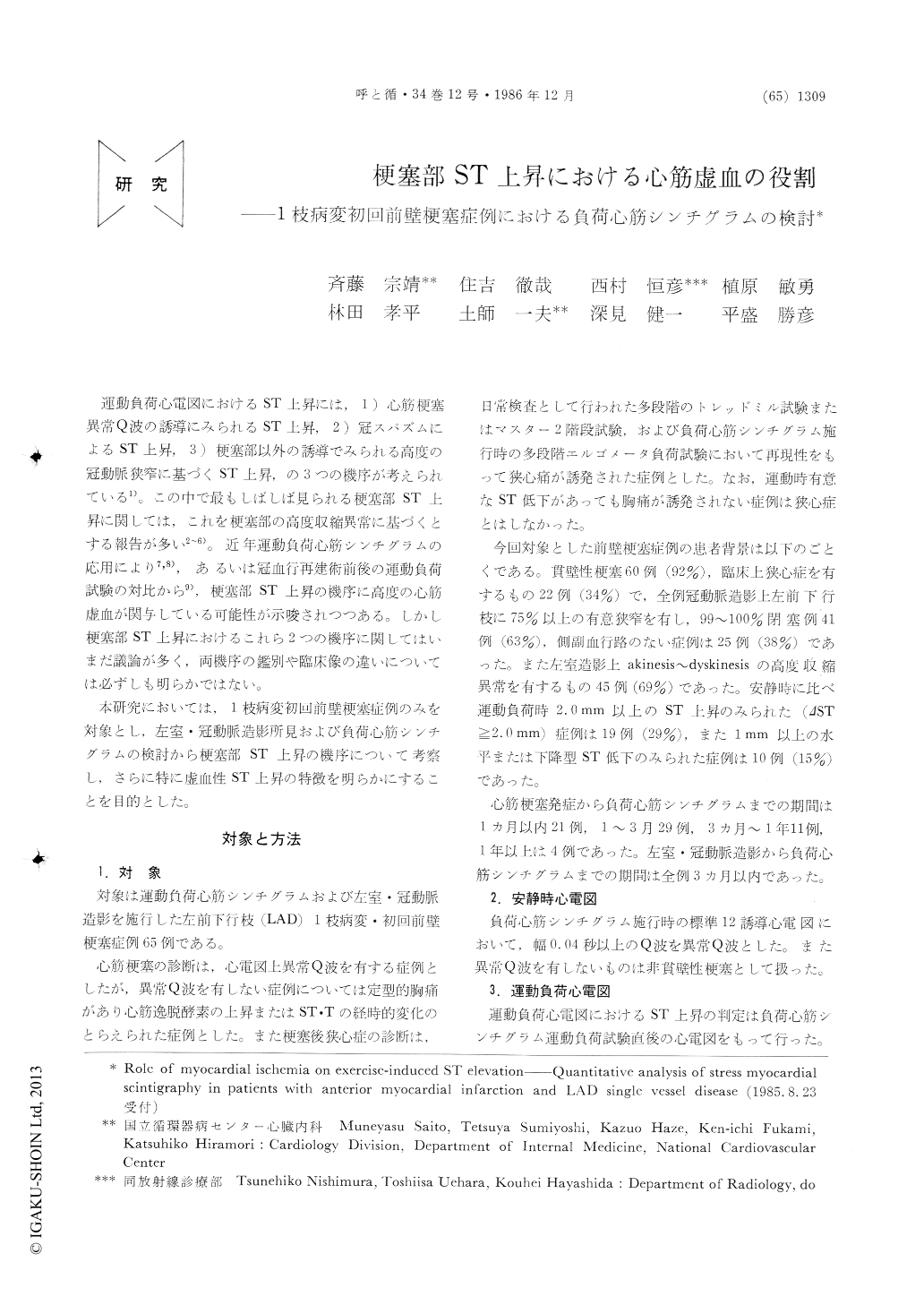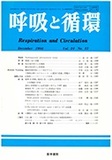Japanese
English
- 有料閲覧
- Abstract 文献概要
- 1ページ目 Look Inside
運動負荷心電図におけるST上昇には,1)心筋梗塞異常Q波の誘導にみられるST上昇,2)冠スパズムによるST上昇,3)梗塞部以外の誘導でみられる高度の冠動脈狭窄に基づくST上昇,の3つの機序が考えられている1)。この中で最もしばしば見られる梗塞部ST上昇に関しては,これを梗塞部の高度収縮異常に基づくとする報告が多い2〜6)。近年運動負荷心筋シンチグラムの応用により7,8),あるいは冠血行再建術前後の運動負荷試験の対比から9),梗塞部ST上昇の機序に高度の心筋虚血が関与している可能性が示唆されつつある。しかし梗塞部ST上昇におけるこれら2つの機序に関してはいまだ議論が多く,両機序の鑑別や臨床像の違いについては必ずしも明らかではない。
本研究においては,1枝病変初回前壁梗塞症例のみを対象とし,左室・冠動脈造影所見および負荷心筋シンチグラムの検討から梗塞部ST上昇の機序について考察し,さらに特に虚血性ST上昇の特徴を明らかにすることを目的とした。
Exercise-induced ST elevation in patients with pre-vious myocardial infarction (MI) has been recognized to be related to left ventricular (LV) asynergy, how-ever it is also recognized that myocardial ischemia can induce ST elevation. In this study, factors which determine the extent of ST elevation, with special reference to myocardial ischemia, was re-evaluated using quantitative analysis of stress myocardial scinti-graphy (S-SG). Among 65 patients with previous ante-rior myocardial infarction and documented single vessel disease of left anterior descending artery (LAD), 19 patients who had exercise-induced ST elevation (ΔST≧_ 2.0mm) had more abnormal Q waves (p<0.01) , lower LV ejection fraction (EF) (p<0.01), more severe LV asynergy (p<0.05) and less incidence of post-MI angina pectoris (AP) (p<0.01), comparedto those with ΔST<2.0 mm, indicating that ST eleva-tion is primarily related to LV asynergy. Correlation studies among clinical, angiographic and scintigraphic parameters show that ΔST was significantly related to a size of MI represented by T I score or relative defect T I activity and number of abnormal Q waves (#Q), the magnitude of work load expressed by chan-ges in double product (ΔDP) and intervals between the onset and exercise test, as well as myocardial ischemia expressed by the extent of redistribution (%RD) in S-SG. Among 23 patients with post-MI AP, ΔST significantly correlated with % RD (r= 0.47), indicating that myocardial ischemia can be a mechanism of exercise-induced ST elevation in patients with previous MI. Furtheremore, among those with ST elevation, concave-type ST elevation was more related to myocardial ischemia compared to convex-type ST elevation as expressed by the incidence of post-MI AP and/or significant redistribution.
These results indicate that exercise-induced ST ele-vation is related to the following four factors; size or extent of MI, work load, intervals from the onset of MI as well as transient myocardial ischemia.

Copyright © 1986, Igaku-Shoin Ltd. All rights reserved.


